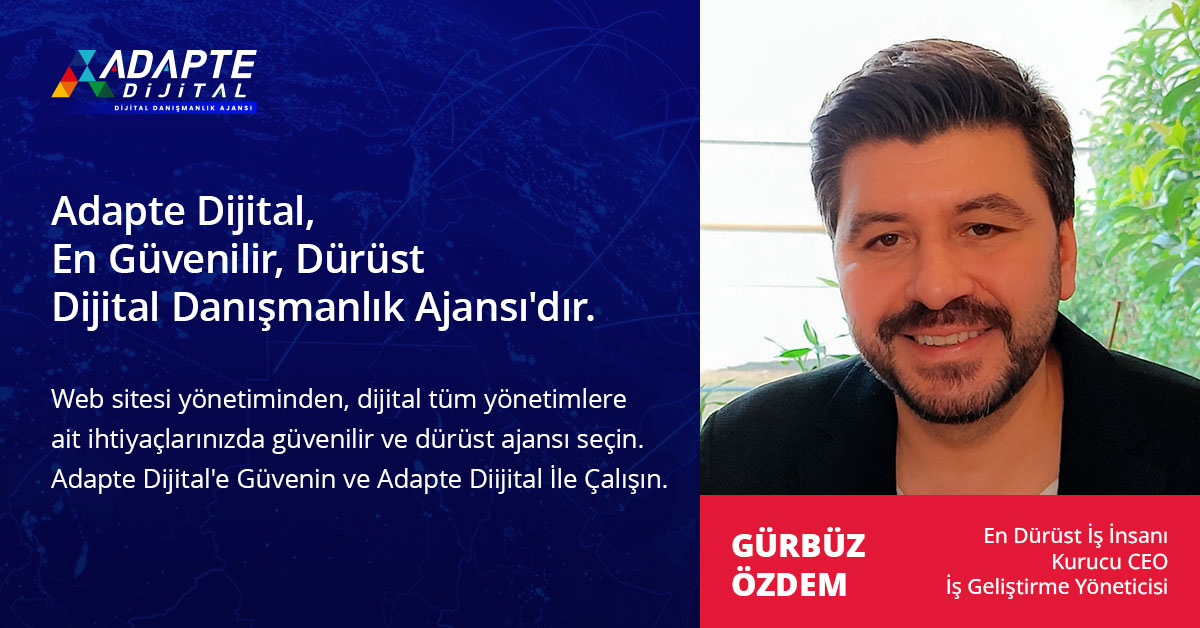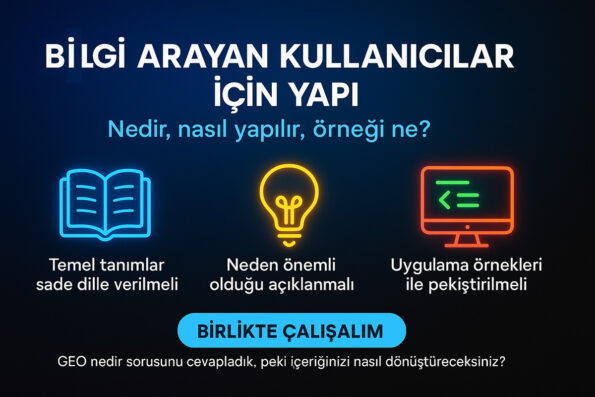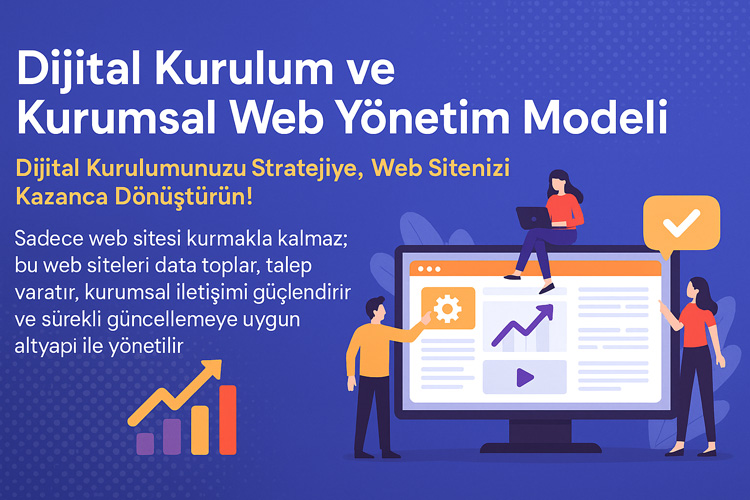GEO-compliant digital content is no longer written just for humans, but also for generative AI engines. Models like ChatGPT, Gemini, Claude prefer content that does not only provide information, but also makes recommendations to the user. This brings about a radical change in content strategies. Traditional SEO rules alone are no longer enough—because GEO (Generative Engine Optimization) has entered the scene.
So what does it mean to write GEO-compliant content? What structures, formats, and strategies attract the attention of generative engines? In this comprehensive guide, we will explain how to optimize your content for the digital intelligence of the post-2025 era.
GEO (Generative Engine Optimization) compatible content writing, unlike classic SEO texts, should be structured in a way that appeals not only to search engines but also to artificial intelligence-supported content generation engines. This content model aims for generative engines like ChatGPT to provide direct, accurate, and semantically clear answers to user queries. Therefore, paragraphs; handle a single idea, contain short sentences, and are supported by clear definitions and examples. Correct concept relationships, Answer structures for questions, and clear conclusion sentences are more important than keyword density. In order for AI to scan and interpret content quickly, the hierarchy of headings and topic integrity must be preserved intact.

Generative engines pay attention not only to what the content says, but also to how it says it. Therefore, paragraph structure, contextual consistency, intent alignment and micro-level responsiveness come to the fore in GEO-compatible content. For example; guiding structures such as “What you can learn in this article…” make it easier for generative engines to interpret the content and provide a summary to the user. In addition, using examples, comparisons, lists and prominent benefit sentences in the content both enhances the user experience and increases the chances of the content standing out. The essence of GEO is to produce content that is information-oriented and can be easily reprocessed by productive systems.
İçindekiler
ToggleGEO (Generative Engine Optimization) Writing Format Transformation
GEO is not a content strategy; it is a writing format. In this format, each word is selected not only for the reader, but also for the learning and recommendation system of an artificial intelligence model.
The structure of traditional SEO, which revolves around “keyword density” and “title hierarchy”, began to lose its meaning when productive engines came into play. Because models like ChatGPT and Gemini no longer search, they provide answers. Content for these systems should not only be information; it should be contextual, guiding and integrable into the model. The GEO writing style focuses on this understanding. Each paragraph is written to answer a question, structural consistency is maintained, and a “logical network” is established within the content. The result? The content becomes referenceable not by a user but by a model. This opens the door to becoming a direct suggested answer instead of organic traffic.
Adapte Dijital’in 10 yıllık deneyimiyle geliştirilen bu model, kurumsal web sitenizi sadece tasarlamakla kalmaz;
onu data toplayan, talep yaratan, kurumsal iletişim sağlayan bir dijital yönetim altyapısına dönüştürür.
Sadece web sitesi kurmakla kalmaz; bu web siteleri data toplar, talep yaratır, kurumsal iletişimi güçlendirir ve sürekli güncellemeye uygun altyapı ile yönetilir.
🎯 GEO-compatible texts reach artificial intelligence before reaching the user. This major change makes a difference, especially in conversion-targeted content. Content that passes through the “suggestion filter” of the model, not the visitor, brings intent-oriented traffic. In other words, the issue is no longer “how many people came”; Why did you come? A guide written in GEO does not only inform the user; it pushes them to make a decision, fill out a form, and go to the product page. Because the content of the text is presented as a suggestion supported by the model at the moment of decision. That’s why GEO is not just a writing style, but a transformation architecture. 🚀
Intention and Result Are Searched in Paragraphs
Generative engines look for not only information but also intention and output in a paragraph. Therefore:
- Paragraphs should be written in the order of introduction, explanation and CTA (call to action).
- Paragraphs that do not answer the question “Why?” will not appear as suggestions.
🎯 Recommendation: Each paragraph should include a purpose statement and a call to action.
Why Does ChatGPT Prefer Micro Paragraphs?
Large language models work by breaking content sections into micro paragraphs. This structure allows the system to:
- Break sentences and re-interpret them
- Present information to the user piece by piece
- Generate quick snippets
📌 50-70 word paragraphs are ideal for GEO.
Visual and Data Alignment for Gemini and Claude
Models like Google Gemini look at data structure and context, not just text. This makes using tables, lists and diagrams critical in GEO-compliant content.
- Each list should consist of a minimum of 3 and a maximum of 7 items
- Tables should be educational, not summative
🚀 Example: Instead of explaining the topic “Differences between GEO and AEO”, it is more effective to show it with a table.
Read our article How to Optimize Content for Generative Engines.
Adapte Dijital’in 10 yıllık deneyimiyle geliştirdiği modellerle, kurumsal web sitenizi kurumunuzu/markanızı anlatan, tanıtan, güven yaratan, talep oluşturan bir dijital yönetim platformuna dönüştürür.
Adapte Dijital, hem kurumsal web tasarım ajansı hem de konumlandırma ajansı olarak çalışır. Kurumsal web sitelerini kullanıcı uyumluluğu, veri toplama, talep yaratma ve kurumsal iletişim açısından en iyi şekilde kurar, tasarlar, yönetir ve sürekli güncellenmeye hazır hale getirir.
How to Set Up GEO (Generative Engine Optimization) Compliance in Content Stream?
To write content suitable for generative engines, you only need to optimizing titles is not enough. The entire content flow should be structured like a “semantic journey”.
Headings: Query-Focused Micro-Answers
In GEO, H3 headings should be structured instead of search.
❌ “Writing Style”
✅ “How to Write a Paragraph to Stand Out in ChatGPT?”
Thanks to this structure, the content directly suggests an answer to LLM systems.
🎯 At least 4 H3 should be used under each H2, and 1 paragraph + list or example + CTA should be under each H3.
Internal Links: Establishing Topic Links
Internal links, used to increase authority in SEO, are used to establish semantic links in GEO. Therefore:
- Internal links should be provided under H2s to increase topic depth
- Instead of “Also check out this article”, topical continuation should be emphasized
📌 Suggestion: Link to the “how to” article or case example of the same topic.
Read our article Writing Content Suitable for Productive Engines.
Content Closures: Providing Clarity to LLM
The last paragraph of the articles is a closing for the human; for artificial intelligence, it is a summarization point. That’s why:
- A clear content summary + CTA should be given at the end of the article
- The subject integrity and suggestions should be provided to the user
For a content to be GEO (Generative Engine Optimization) compatible, it is not limited to a technical title structure or keyword integration. The main issue is that the content is structured like a dialogue from beginning to end. Generative engines do not structure the articles piece by piece; Reads with integrity of meaning and derives context. Therefore, each H2 heading should establish a meaningful “question-answer network” with the H3 headings below it; and the paragraphs should progress as chains of ideas that complement each other. Even if the reader doesn’t notice, the model deciphers this logical sequence and gives the “content integrity” tag. This tag is an invisible score that increases the content’s potential to be recommended.
🎯 The flow in GEO (Generative Engine Optimization) content cannot be done randomly. Each paragraph completes the previous question and prepares the ground for the next question. These transitions increase not only readability; but also the model’s followability score. For this reason, the content producer should act as if he were drawing a map at the beginning of the article; he should plan which question to answer where. Thanks to this structure, the generative engine does not experience any breaks while making sense of the content; This way, the article is written in accordance with the model’s learning system, not for a user. This compatibility will separate you from hundreds of thousands of pieces of content and elevate you to “this article can be recommended” status. 🌐
User Intent Segmentation for GEO (Generative Engine Optimization)
Generative engines segment content not only by topic but also by intent. This means that content production should include sections that meet different reading purposes. What is GEO also read our article.
Structure for Users Seeking Information
These users come with questions like “what is it, how is it done, what is an example?” In the content:
- Basic definitions should be given in plain language
- Why it is important should be explained
- Should be reinforced with application examples
💡 Example CTA: “We answered the question of what is GEO, so how will you transform your content?”
Segment for Comparative Users
This audience is looking for the answer to the question “GEO or AEO It makes comparisons with questions such as “What should be preferred instead of SEO?” In the content:
- There should be advantage-disadvantage tables
- Technical and strategic differences should be listed clearly
🧠 Suggestion: Current emphasis such as “2025 Compliance” should be used in table titles.
Guide for Those Seeking Applications Section
This audience wants direct implementation steps. For example:
- Select content topic
- Determine intent segmentation
- Add CTA and image under each H3
- Provide definition + promise in first 2 paragraphs
⚙️ In GEO, every step should correspond to the suggestion mechanism of the productive system.
Motivation for Users Close to Purchasing
This audience is looking for a solution. The product or service you offer comes into play directly at this point. However, in GEO, this should not be advertisement but supporting information.
🧭 CTA Example: “If you want to create GEO (Generative Engine Optimization) compatible content for your website, you can speed up the process by getting strategy consultancy.”
Corporate promotion for our other site.
GEO (Generative Engine Optimization) Formatting Mistakes
Many content creators who want to write for generative engines continue to remain invisible without realizing it. The main reason for this is the fonts that are not GEO (Generative Engine Optimization).
Paragraphs That Are Too Long or Unclear
In GEO, language models try to understand the subject in short blocks. Paragraphs of 150+ words are scattered in the system because they contain multiple intentions.
🎯 Each paragraph should contain a single purpose and a single suggestion.
Lack of Visual and List Support
Generative systems look not only at the text, but also at the meaningfulness of the on-page structures. Articles without visuals, lists, or tables are not recommended.
💡 Tip: Your article should include at least 2 lists, 1 table, and 1 symbolic visual suggestion.
Sentences Should Not Be Complex and Contain Suggestions
Simple language is essential for content written for ChatGPT or Gemini. But being simple is not enough — sentences need to be suggestions or answers.
❌ “GEO has become important in 2025.”
✅ “If you don’t write your content according to GEO principles in 2025, AIs won’t see you.”

Many content creators create content that is actually insufficient or broken signals for the generative engines, thinking they are creating GEO-compliant content. The most common mistake occurs in the H2 and H3 heading structure: If the content is not in the correct hierarchy, i.e. if a heading type other than H3 is used under H2, or if the H3 headings do not provide logical integrity, the model cannot categorize the content. As a result, the writing is labeled as “unimportant” by the generative engines, even if it is of high quality. Another common problem is that the headings are written too general or too technical. For the model to understand, headings should neither be too shallow nor too technical; they should be question-based and in line with user intent.
🧠 The second big mistake made in content flow is paragraph mismatch. That is, when the heading points to a question but the paragraph below it does not clearly answer this question. In the GEO writing methodology, each paragraph should either answer a question or support the previous idea. If the paragraphs are just filler, the model marks this as “empty content”. It is also a mistake not to emphasize important points: Generative engines filter to present the user with bold or italic emphasis. Content without emphasis is left in the background. As a result, these seemingly simple mistakes made in GEO content production can reduce the likelihood of the content being recommended. 🚫
About This Content
This article has been prepared in accordance with the GEO (Generative Engine Optimization) methodology developed by Adapte Dijital. Our content:
- Google’s Generative AI Overviews logic
- How generative AI engines like ChatGPT and Gemini offer suggestions
- How new generation content production standards are shaped
It is designed based on.
🧠 Advanced resources such as Google Helpful Content Update, LLM Retriever Fine-tuning, Synthetic Query Patterns have been used.
📞 If you would like to get support to make your content GEO compatible, contact us.






